Generative Engine Optimization: The Complete Visual Guide
Welcome to the strategic blueprint for the future of content. This visual guide breaks down the core principles of Generative Engine Optimization (GEO), offering a clear, scannable overview of the concepts reshaping our industry. Use this as your starting point to understand how to make your content not just visible, but influential in the age of AI search.
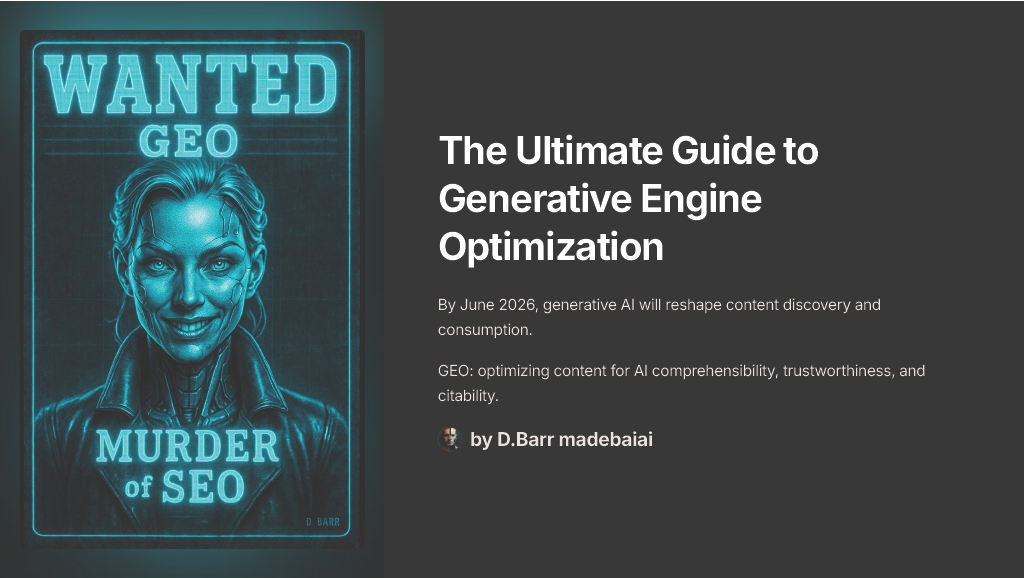
Generative Engine Optimization
This guide introduces the fundamental premise of Generative Engine Optimization (GEO). As generative AI reshapes content discovery, the focus shifts from traditional SEO to optimizing content for AI comprehensibility, trustworthiness, and citability. This is the new frontier of digital strategy.
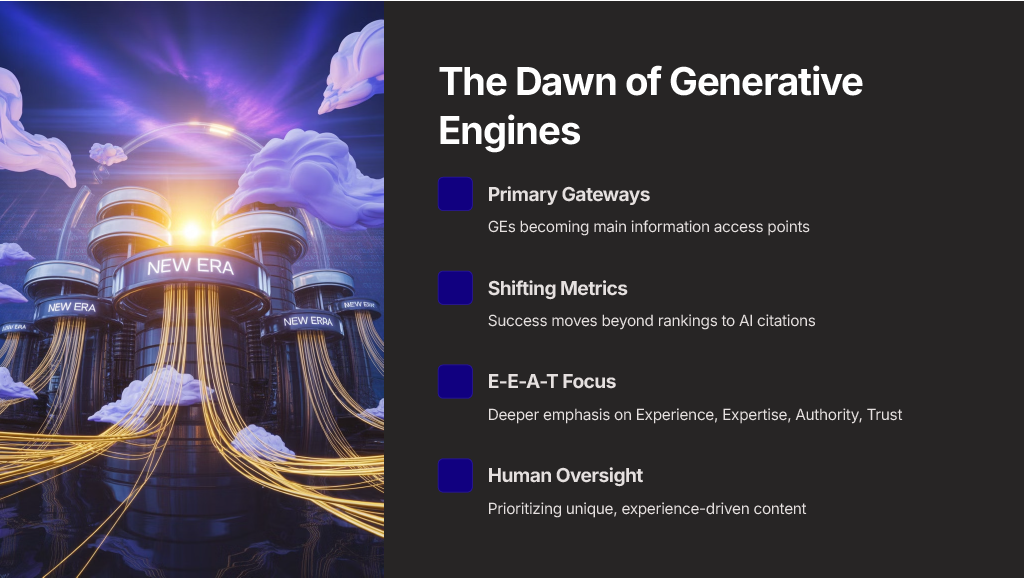
The Dawn of Generative Engines
The rise of Generative Engines (GEs) marks a fundamental shift, establishing them as primary gateways to information. This new era redefines success with a focus on AI citations over traditional rankings, a deeper emphasis on E-E-A-T (Experience, Expertise, Authority, Trust), and a renewed importance for unique, experience-driven content curated with human oversight.
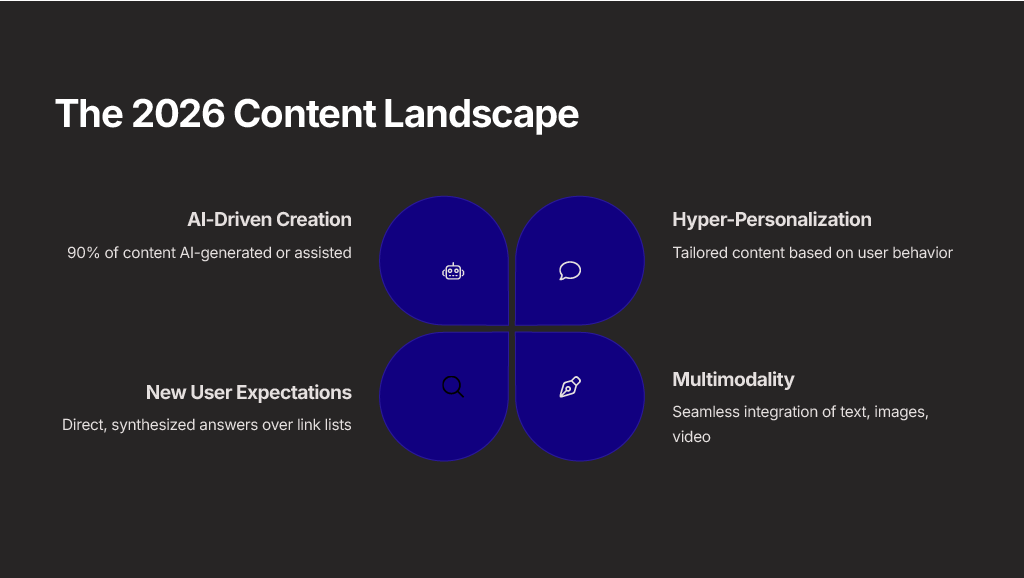
The 2026 Content Landscape
By 2026, the content field will be defined by four key forces. AI-Driven Creation will be dominant, with 90% of content being AI-generated or assisted. Hyper-Personalization will tailor content based on user behavior, while New User Expectations will demand direct, synthesized answers over simple link lists. Finally, Multimodality will require the seamless integration of text, images, and video.
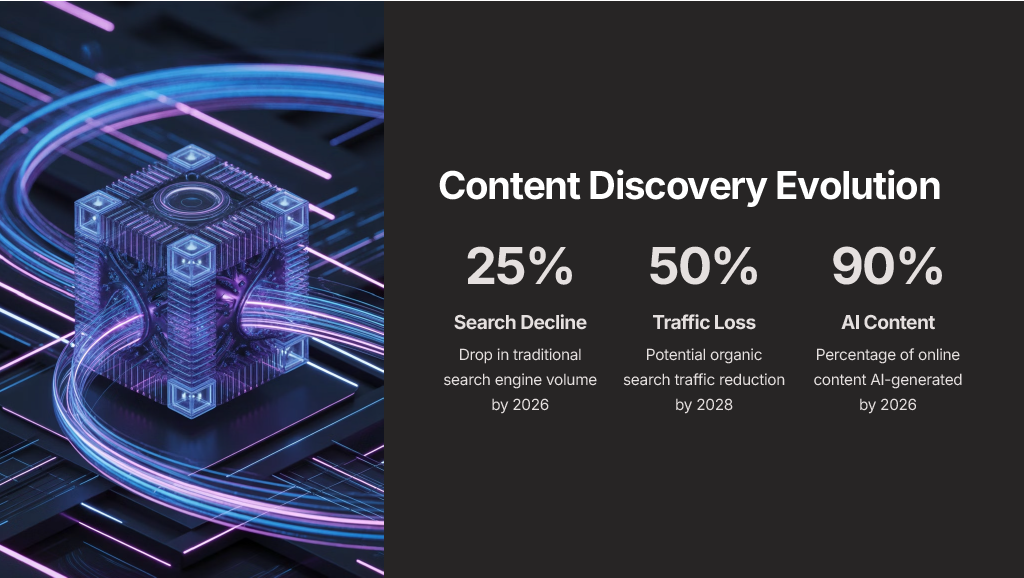
Content Discovery Evolution
The way users find information is undergoing a seismic shift. Projections indicate a 25% drop in traditional search engine volume by 2026, leading to a potential 50% reduction in organic search traffic by 2028. This is coupled with the forecast that 90% of all online content will be AI-generated by 2026, fundamentally altering the digital ecosystem.
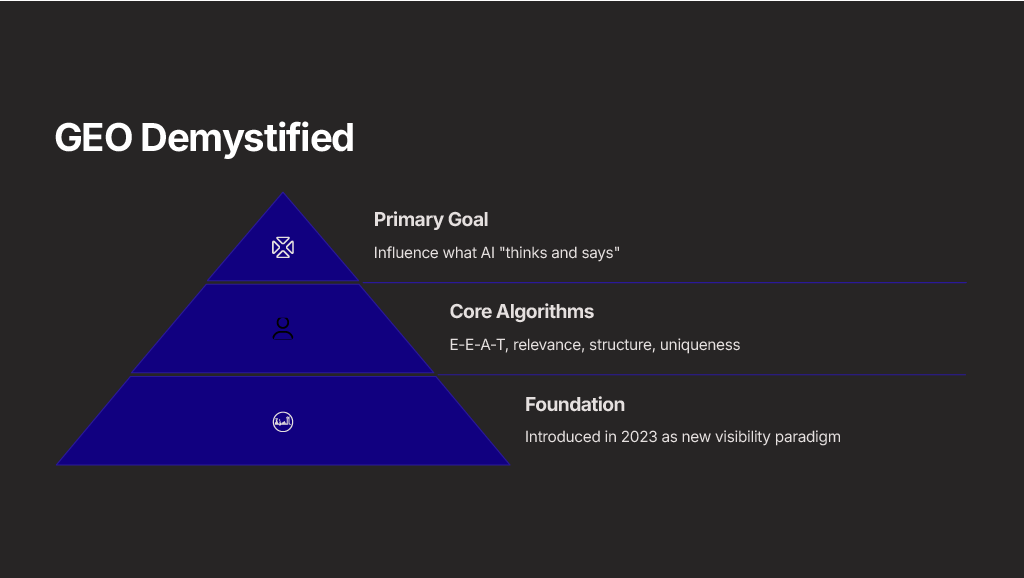
GEO Demystified
Generative Engine Optimization is built on a simple hierarchy. The Primary Goal is to influence what AI “thinks and says.” This is supported by Core Algorithms prioritizing E-E-A-T, relevance, structure, and uniqueness. The entire practice rests on a new Foundation for visibility introduced in 2023, moving beyond traditional SEO metrics.
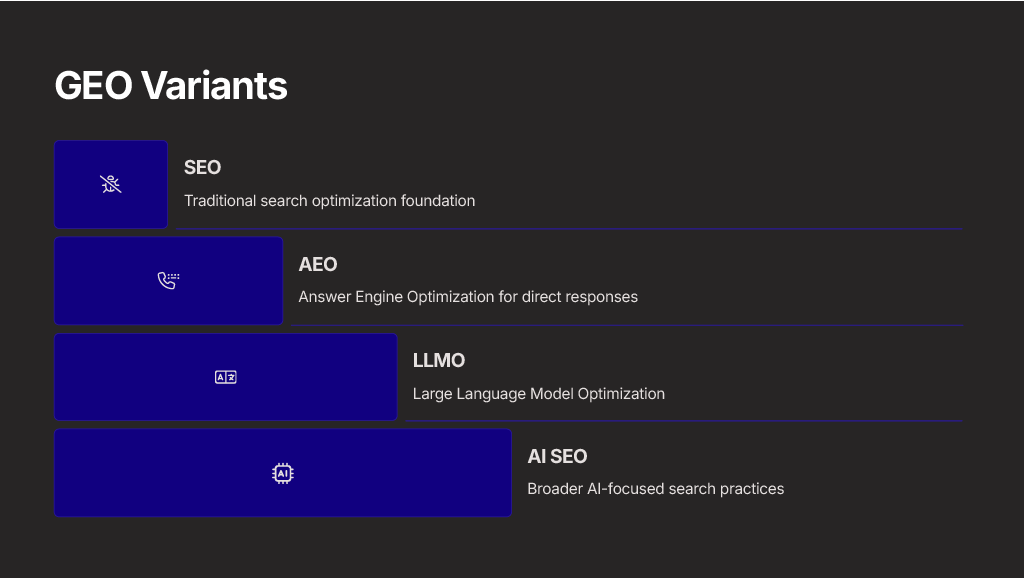
GEO Variants
Generative Engine Optimization is not a single practice but an ecosystem of related disciplines. It stands on the foundation of traditional SEO while incorporating newer variants like Answer Engine Optimization (AEO) for direct responses, Large Language Model Optimization (LLMO), and the broader practice of AI SEO.
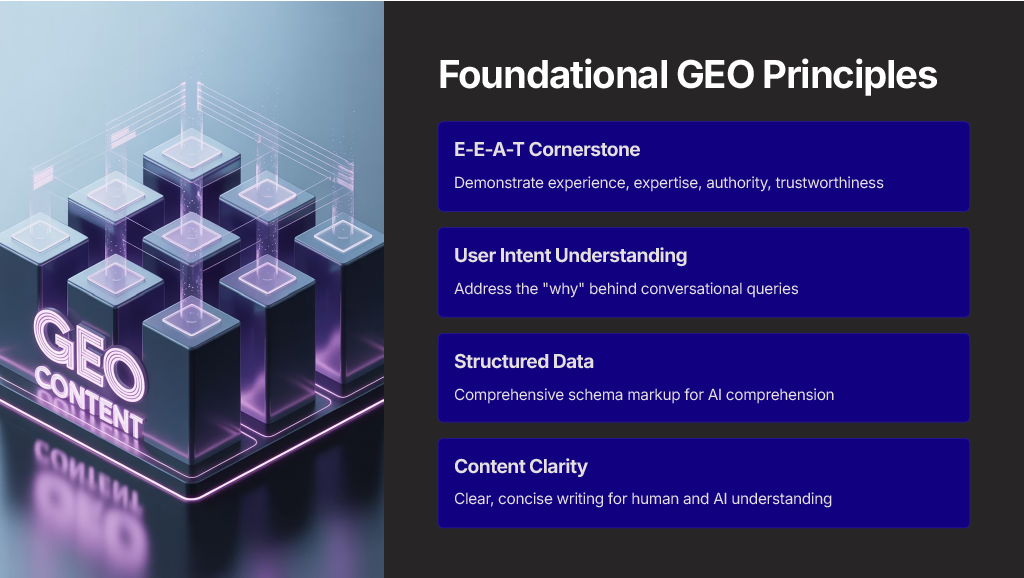
Foundational GEO Elements
Success in GEO is built on four pillars. The E-E-A-T cornerstone (Experience, Expertise, Authority, Trustworthiness) remains critical. This is paired with a deep understanding of user intent, the implementation of comprehensive structured data for AI comprehension, and a commitment to content clarity for both human and machine audiences.
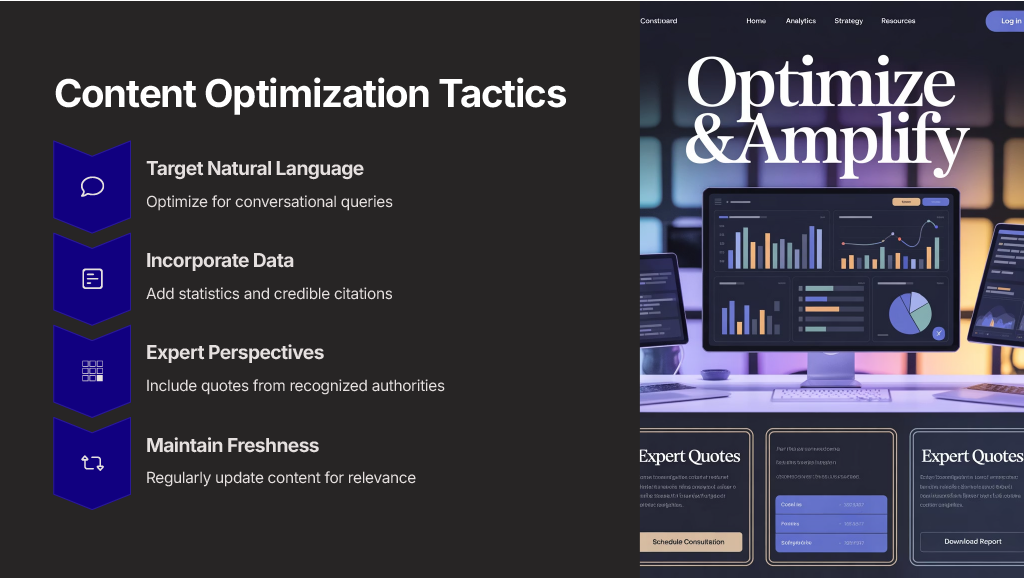
Content Optimization Tactics
Effective GEO requires specific content tactics. These include optimizing for conversational, natural language queries, enriching content with credible data and statistics, incorporating expert perspectives from recognized authorities, and ensuring content freshness through regular updates.
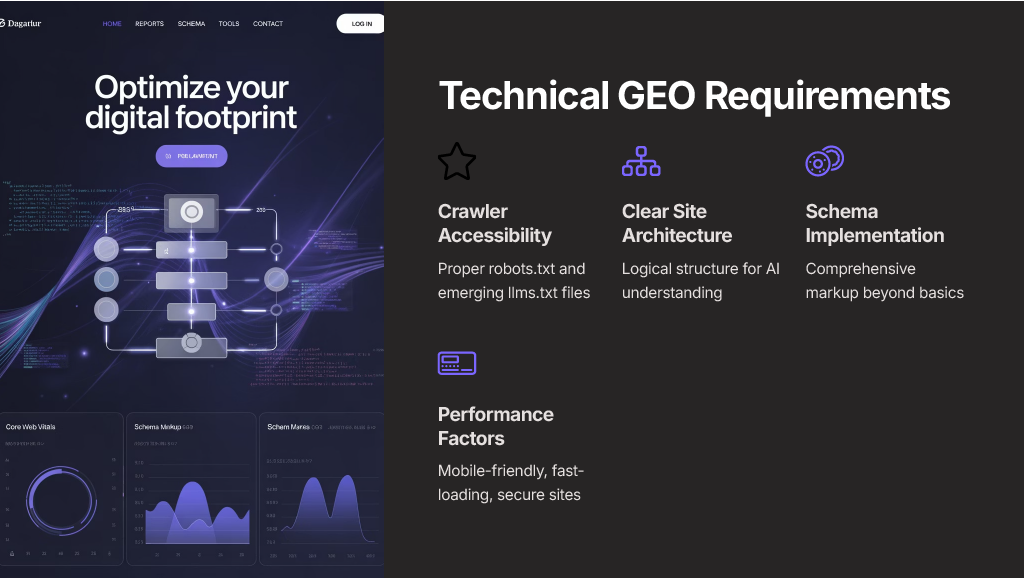
Technical GEO Requirements
Beyond content, GEO demands a solid technical foundation. This includes ensuring crawler accessibility through properly configured robots.txt and emerging llms.txt files, maintaining a clear site architecture, implementing comprehensive schema markup, and prioritizing performance factors like mobile-friendliness and fast loading speeds.
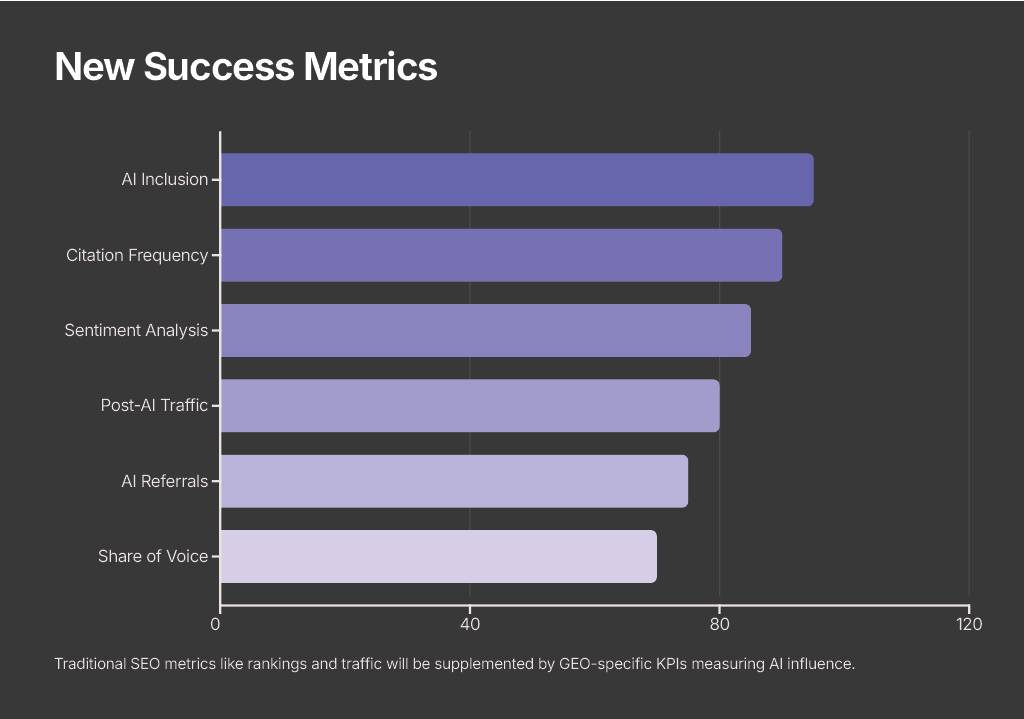
New Success Metrics
The advent of GEO introduces new KPIs beyond traditional traffic and rankings. Success is now measured by metrics like AI Inclusion, Citation Frequency, Sentiment Analysis of AI outputs, referral traffic from AI sources (Post-AI Traffic and AI Referrals), and the overall Share of Voice within generative responses.
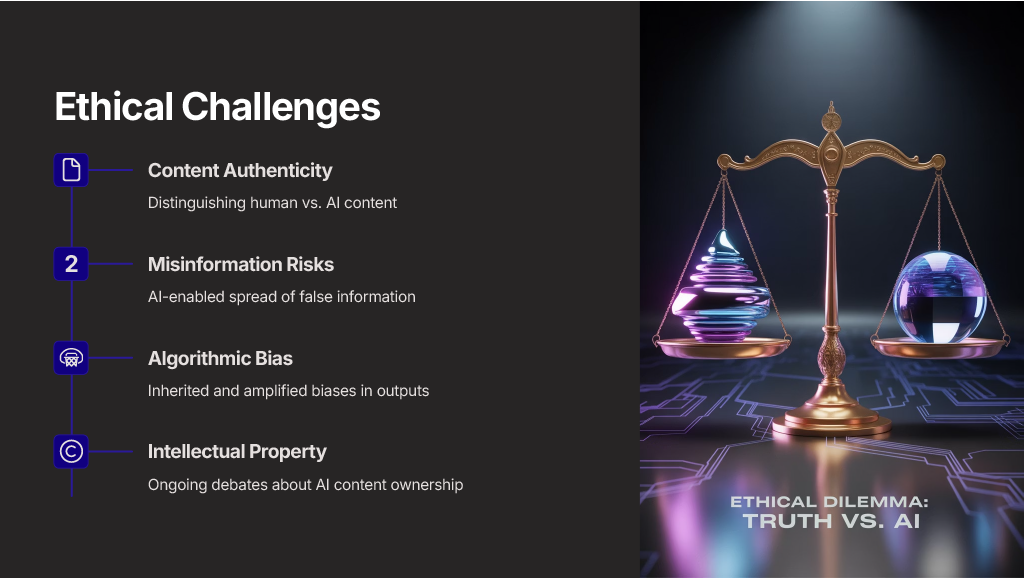
Ethical Challenges
Navigating GEO requires confronting significant ethical dilemmas. Key challenges include ensuring content authenticity in an age of AI generation, mitigating the risks of AI-enabled misinformation, addressing inherited algorithmic bias, and resolving ongoing debates around intellectual property and AI content ownership.
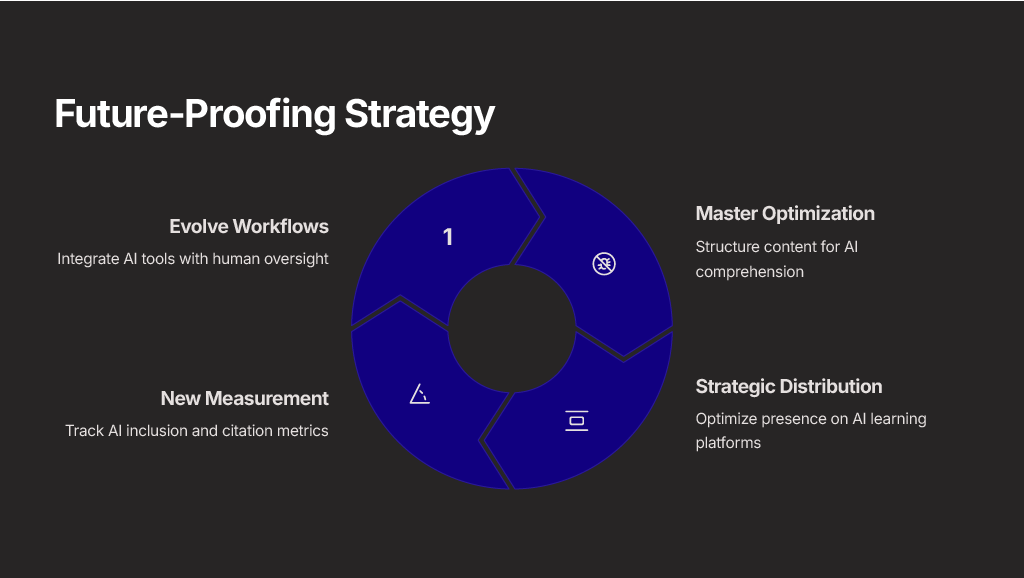
Future-Proofing Strategy
A durable content strategy involves a four-part cycle. Teams must evolve workflows to integrate AI tools with human oversight, master optimization by structuring content for AI, pursue strategic distribution on AI learning platforms, and adopt new measurement practices to track AI-centric metrics like inclusion and citation.
